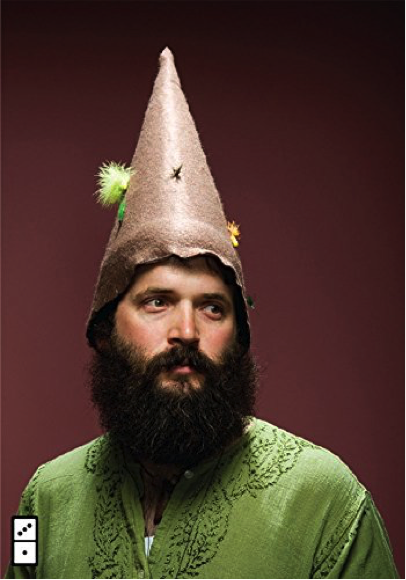We are All Weird hearkens back to some of Godin’s earlier themes (and yes, that is the actual cover of the book).
In the book, Godin argues that not only is mass-market dead, but the increasingly customized market is where the action truly lies.[ii]
Call it personalization, specialization, customization, or wierdifcation. It does not matter. The majority is now no longer the mass market. This means that how you approach and sell to your markets (note the plural in the word markets) must change too.
Mass
Godin defined Mass as follows:
Mass gave us efficiency and productivity, making us (some people) rich. Mass gave us huge nations, giving us (some people) power. Mass allowed powerful people to influence millions, giving us (some people) control.
And now mass is dying.
We see it fighting back, clawing to control conversations and commerce and politics. But it will fail; it must. The tide has turned, and mass as the engine of our culture is gone forever.[iii]
Weird
He then defined Weird:
In this manifesto, I ‘m not talking about weird by birth. I’m talking about people who are making an affirmative choice to be weird. Most people who make that choice are paradoxically looking to be accepted. Not by everyone, of course, but by their tribe, by the people they admire and hope to be respected by.[iv]
How the Weird Became the Majority
In the mid-20th century, our goal was similarity. We wanted to look just like everyone else. We lived in houses that looked just like all the other houses on the street. The goal was to be a “company man” who spent his entire career working for a good company, in order to retire with a gold watch and move to Florida—just like everyone else we knew.
Today, conformity is out. We express ourselves by highlighting points of differentiation. We can’t imagine working for one company for life, which is good because according to the Bureau of Labor Statistics, the average employee will work 11.7 different jobs between 18 and 48. Retirement means a new chapter in life, not relaxing on a beach in Florida.[v] Don’t believe me? Just compare old television commercials with modern commercials and you will see the contrast. Mass is dead.
A confluence of forces have broken the back of the mass market and led us to many smaller markets. “Amplified creation, marketing efficiency, and the support of tribes, then, are pushing toward one outcome: We’re getting weirder.”[vi]
By far the biggest force leading us toward wierdification is the internet. You can find virtually anything, search for any tribe, and find other people who do whatever it is you want to do. Do you like the Sphynx cat (that horrid, hairless cat that looks like Gollum from Lord of the Rings)? I don’t either, but you can find people who love these hideous creatures on the internet.

Godin identified three forces that are making us weirder:
- Explosion of wealth
- Explosion of media choices
- Explosion of shopping choices[vii]
Americans are consumed with number 1 (the explosion of wealth). The internet encompasses #2 and #3 (media and shopping choices). Those without resources or choices spend little time thinking about how to be weird.
But Why Are People Weird?
The short answer is that they can be. We now have the tools at our disposal to be weirder than ever. But there is another force driving weirdness. Godin explained:
Ronald Ingleheart and other researchers report that the ability to be Weird, the freedom to make choices, and the ability to be heard are the factors most highly correlated with happiness around the world. Regardless of income or race or geography, when we let people choose among things that are important to them, they become happier.[viii]
Since people can be weird, they choose to be weird. Weirdness is different to different people. Your idea of weird may be different than mine, but what is important here, for our purposes, is not that you are weird or how you are weird, but that this thing that we call normal is no longer as big as it once was. Attempting to market to the mass is becoming less and less effective as the mass has fragmented.
“Mass is dead. Here Comes Weird”[i]
What About You?
Your market fragmented. Can you identify and define the fragments? How do you speak to those different fragments?
References
[i] Godin, S. (2011). We are all weird. United States: The Domino Project. (p. 2).
[ii] Godin, S. (2011). We are all weird. United States: The Domino Project. (p. 4).
[iii] Godin, S. (2011). We are all weird. United States: The Domino Project. (p. 11).
[iv] Godin, S. (2011). We are all weird. United States: The Domino Project. (p. 16).
[v] National Longitudinal surveys (2018). Bureau of Labor Statistics. Retrieved from https://www.bls.gov/nls/nlsfaqs.htm#anch43
[vi] Godin, S. (2011). We are all weird. United States: The Domino Project. (p. 37).
[vii] Godin, S. (2011). We are all weird. United States: The Domino Project. (p. 63).
[viii] Godin, S. (2011). We are all weird. United States: The Domino Project. (p. 79).
______________

Dr. Darin Gerdes is a tenured Professor of Management in the College of Business at Charleston Southern University.
All ideas expressed on www.daringerdes.com are his own.
This post was originally created for Great Business Networking (GBN), a networking organization for business professionals where Dr. Gerdes is the Director of Education.
______________

